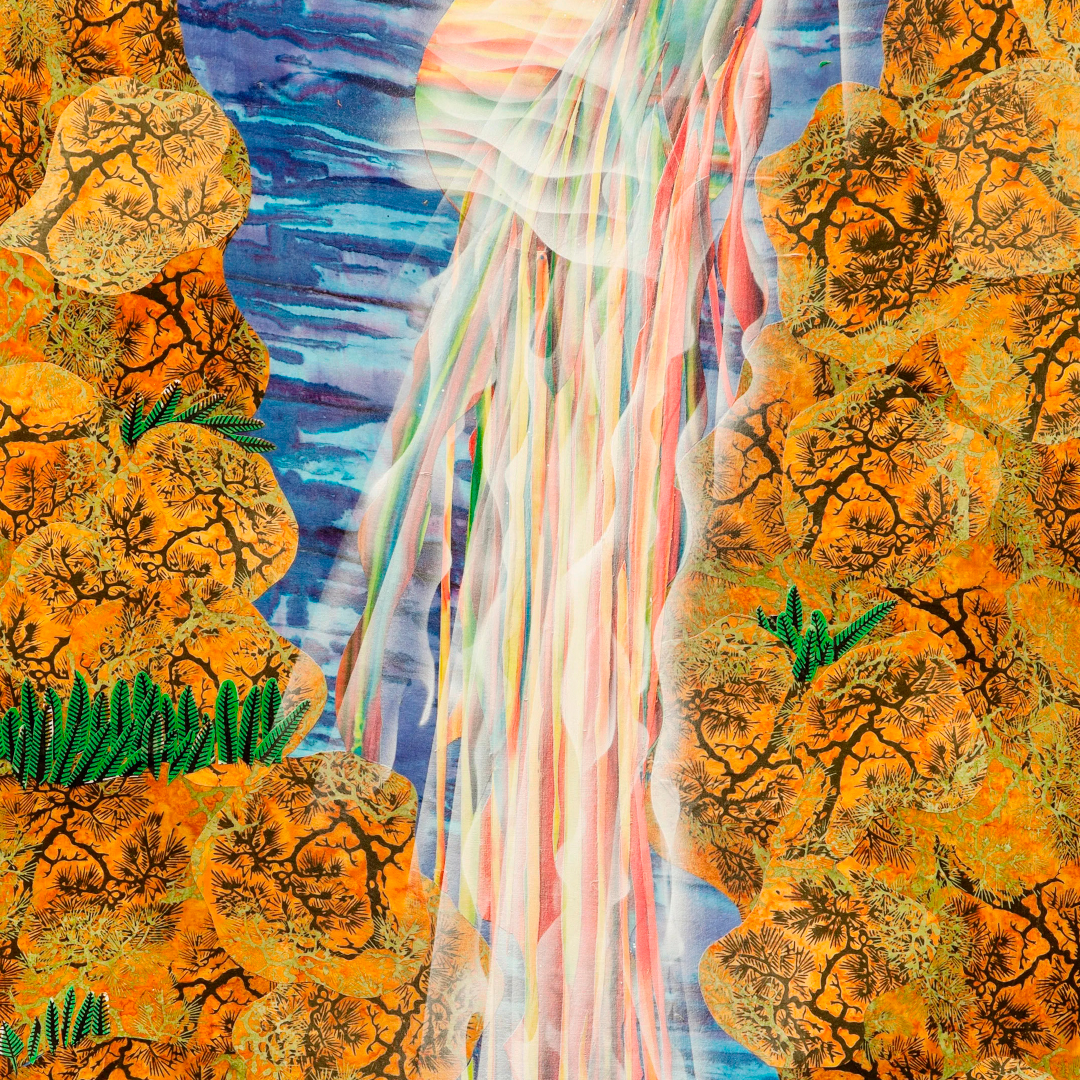Hokusai Smartphone Tour: Chemical Falls

Katsushika Hokusai’s influence knows no bounds. Nearly four centuries after his death, the Japanese master and his woodblock prints continue to inspire the work and practice of contemporary artists. One such artist is Merion Estes.
With strong ties to early Los Angeles feminist art spaces and a pioneering role in the Pattern and Decoration movement, Merion Estes typically depicts landscapes and seascapes. She combines found imagery from printed fabrics with collaged materials and spray paint to build up lively texture and vivid color, often with a political tone. In Chemical Falls, on view in Hokusai: Inspiration and Influence from the Collection of the Museum of Fine Arts, Boston at SAM, Estes blends visual pleasure with the horror of environmental crises, specifically citing Hokusai as an influence on her ongoing treatment of natural scenes.
Learn more about this 2016 work from Kendall DeBoer, Curatorial Assistant in the Department of Contemporary Art at the Museum of Fine Arts, Boston, by tuning in to the fifth stop of the exhibition’s free smartphone tour. Explore all seven stops on the tour by scanning the QR code adjacent to select artworks in SAM’s galleries or on your own time via SoundCloud. Hokusai: Inspiration and Influence closes on Sunday, January 21. Reserve your tickets to see Estes’s work, alongside more than 300 artworks by Hokusai and his contemporaries, now!
Chemical Falls, 2016
KENDALL DEBOER: Chemical Falls by Merion Estes is a more recent example of a theme the artist has frequently visited throughout her over fifty years of art making: beautiful landscapes and environmental degradation. As is her process for many of her artworks, Estes created Chemical Falls by combining collage elements with a section of found, printed, mass-produced fabric, which she then spray painted in high-keyed and striking colors. Building up layers of pigment and texture, Estes presents us with a breathtaking waterfall that is as alluring as it is otherworldly—and laced with the sinister specter of polluted waters.
Born in Salt Lake City, Utah, in 1938, Estes received her BFA in 1970 at the University of New Mexico. She then quickly earned her MFA in 1972 at the University of Boulder Colorado before moving to Los Angeles, California. In LA, Estes would become a key figure in early feminist arts organizations like Womanspace and Double X. She was also part of the Pattern and Decoration movement in the United States, which often intersected with feminist art concerns. Pattern and Decoration artists rejected the austerity of Minimalism and Conceptualism, which they felt relied on sexist and racist assumptions, in favor of championing ornament, aesthetic beauty, and artistic production traditionally categorized as “women’s work,” like fiber arts. These interests persist in Chemical Falls, with its fabric basis, layers of patterned land masses, and geometric striations of water.
Many pattern and decoration artists felt the European canon of Western art history was too narrow in scope and therefore looked elsewhere for artistic precedents. Quite a few of these artists found inspiration in Japanese prints, including Estes, who has looked to Hokusai as an ongoing influence throughout her career. The intense verticality and perspectival view of Chemical Falls feels in direct conversation with Hokusai’s series A Tour of Waterfalls in Various Provinces. Comparing Chemical Falls to Hokusai’s work The Amida Falls in the Far Reaches of the Kisokaidō Road from 1832 reveals similar treatment of linear falls pouring between curving, earthy cliffs dotted with sprigs of green vegetation. Each work features a circular form near the top of its composition, perhaps a source for the waterfalls. These parallels show the continued relevance of Hokusai in Estes’s work.
– Lily Hansen, SAM Marketing Content Creator
Image: Chemical Falls, 2016, Merion Estes, American, born 1938, printed fabric and spray paint on canvas, courtesy of the artist.